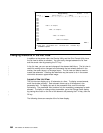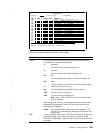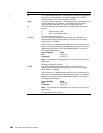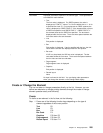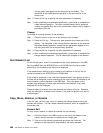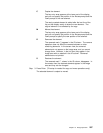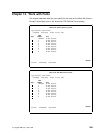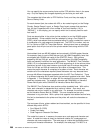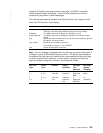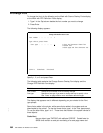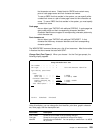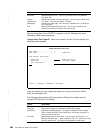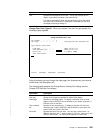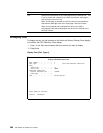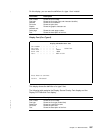You can specify the source overlay fonts and the PFD definition fonts in the same
way. Only the display title changes depending on the fonts you work with.
| The examples that follow refer to PFD Definition Fonts, and they also apply to
| Source Overlay Fonts.
| For each element (text, bar codes with HRI, or box containing text) on the Design
| Overlay, Design Record Layout, or Design Page Layout screens that requires a
| font, the font is specified with a font number or font local identifier (1-8) or
| *DEFAULT. In this display, you can specify which font is actually used for each
| font local ID.
| Fonts are stored either in the printer (printer-resident) or on the AS/400 system
| (host-resident). Printer-resident fonts are selected by using a Font Global ID
| (FGID), while host-resident fonts are selected either by using a coded font name or
| a combination of a code page and character set. The FGID is a number, such as
| 011 for Courier or 5687 for Times New Roman. Most printers have an operations
| panel option that will print out all of the printer-resident fonts along with the FGID
| number.
| Host-resident fonts are AS/400 objects and are stored in AS/400 system libraries.
| For example, there is a set of 240 dots per inch (dpi) IBM Compatibility fonts that
| are shipped with OS/400 and reside in the QFNTCPL library. With printers
| supporting 240 dpi, 300 dpi, and 600 dpi print resolutions, the IBM Compatibility
| fonts are probably insufficient for most applications. The IBM AFP Font Collection
| (5648-113) is a comprehensive set of AFP fonts supporting all of the various printer
| resolutions as well as the most common type styles used in business documents.
| Fonts for 240 dpi and 300 dpi resolutions are raster or bitmapped fonts. This
| means that each character is comprised of a pattern of dots. Each character set
| contains all of the characters required (these characters can vary because there
| are over 48 different languages supported within the AFP Font Collection). There
| is a different character set for each point size and each typeface to be used. Refer
| to Appendix I, “Font Samples” on page 465 for samples of the most commonly
| used font character sets. For example, character set C0H40060 is a Helvetica
| Roman Bold 6-point while C0H400Z0 is Helvetica Roman Bold 36-point.
| The IBM AFP Font Collections also contains outline (scalable) fonts. With outline
| fonts, each character is represented by a series of vectors. As a result, one
| character set can be “scaled” to any point size. For example, the outline character
| set for Helvetica Roman Bold is CZH400. This one character set can print
| characters in any point size. With a printer that supports host-resident outline fonts,
| this font is downloaded to the printer and the printer will scale the characters as
| required.
| The two types of fonts, printer-resident and host-resident, can be specified in three
| different ways within AFP/U:
| Font Global ID (FGID)
| Coded Font Name
| Code Page and Character Set Name
| The coded font name is, in essence, the same as a code page and character set
| name. A coded font name is simply a shorthand notation for a code page and
| character set name combination. The code page is a table that facilitates certain
| country and character differences. For example, the code page T1V10037 is a
290 AFP Utilities for AS/400 User’s Guide



